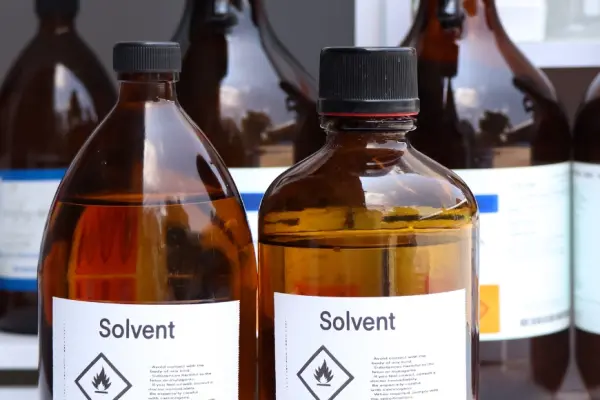
DEKRA Advisory & Training
Managing flammability hazards? Our DEKRA experts can assist you with this.

DEKRA Advisory & Training
Managing flammability hazards? Our DEKRA experts can assist you with this.
Flammability Testing
Any process hazard analysis, aimed at keeping people, the community, and company assets safe, must focus in part on flammability issues. Gases and vapors are of particular concern in this context as they readily mix with air, potentially leading to pool fires, flash fires, jet fires, vapor cloud explosions, boiling liquid expanding vapor explosions (BLEVE) and perhaps detonations. The consequences of these events, if allowed to occur, can be far-reaching and devastating.
We understand the crucial role of applicable flammability data in understanding, assessing, and managing fire and explosion hazards. From identifying the upper and lower flammability limits (UFL and LFL, respectively) of substances, to determining flashpoints to predicting explosion severity and much more, we offer the full suite of flammability tests based on recognized standards and best industry practices.
Your Benefits
- Advice and support in assessing your fire and explosion risks
- Risk assessment under ambient and process conditions
- Simulation of flammability properties
Our Approach
Whether you store, handle or process flammable/combustible materials, it is necessary to have all applicable data needed to assess risk at ambient, atmospheric and process conditions. The flammability properties of gas or vapor atmospheres are often affected by operating and processing conditions such as chemical properties, temperature, pressure, composition of the fuel gas or vapor mixture, concentration of inert gaseous components, concentration of gaseous oxidants, volume and material of construction of the test vessel.
Comprehensive Flammability Testing
Some of the tests process safety leaders can employ to evaluate risk and assure the safety of people and operations involving flammable gases or liquids include:
- Vapor Pressure – The pressure exhibited by vapor present above a liquid surface is known as vapor pressure. Vapor pressure is an indication of a liquid's evaporation rate. A substance with a high vapor pressure at normal temperatures is often referred to as volatile.
- Limiting Oxygen Concentration (LOC) – This is the minimum concentration of oxidant capable of supporting combustion. This data can be used to study explosion prevention (elimination of flammable atmospheres by oxidant depletion or decreasing ignition sensitivity of the flammable atmosphere) or explosion severity reduction involving the use of inert gases.
- Flash Point – The flash point of a liquid is the lowest temperature at which sufficient vapor is evolved to form a flammable mixture in air at standard atmospheric pressure. The flash point provides a simple, convenient index for assessing the flammability of a wide variety of materials.
- Auto-ignition Temperature – This is the lowest temperature at which a material will spontaneously ignite in the absence of an external ignition source, such as a spark or flame. The auto-ignition temperature can be used to specify operating, storage, and handling procedures for materials.
- Explosion Severity / (Maximum Explosion Pressure, Pmax and maximum rate of pressure rise, Kg) – Pmax and Kg are explosive properties measured in the laboratory to quantify the severity of a gas/vapor cloud explosion. The Pmax and Kg data can then be used to design explosion protection measures for process equipment and buildings.
- Flammability Diagram – Under various temperature and pressure conditions, liquids will evolve a certain quantity of vapors. For pure substances, the vapors evolved in air at atmospheric pressure may be flammable over a certain range of concentrations defined by the upper and lower flammability limits. If the oxygen concentration in air is reduced the range of flammability is generally reduced. The effect of oxygen concentration on flammability properties is best represented by plotting a three-component flammability diagram showing the effect of oxygen concentration and inert gas (N2) at atmospheric conditions on the flammability of the vapors or gases.
- Minimum ignition energy (MIE) test: Determines the lowest spark of energy capable of igniting a sample under test conditions. The test is used primarily to assess the potential vulnerability of vapors to electrostatic discharges, but is also relevant to frictional sparks.
- Limits of flammability: The UFL and LFL define the range of flammable concentrations for a substance in air at atmospheric pressure. They may be used to specify operating, storage, and materials handling procedures. They are particularly useful in specifying ventilation requirements for operations involving flammable liquids and gases. We determine limits of flammability in accordance with the American Society for Testing and Materials (ASTM) Method E681-94.
- Open burning test (liquids): This test is performed in order to visually (qualitatively) characterize the behavior and traits of a burning liquid.
- Sustained combustibility test: Used to determine, if a substance sustains combustion when heated under the test conditions and exposed to a flame. We perform the sustained combustibility test according to the “United Nations Recommendations on the Transport of Dangerous Goods”, second revised edition, 1995
Why DEKRA?
- We possess accredited state-of-the-art large-scale flammability test laboratories.
- We can provide testing for all process conditions and scales.
- We conduct our tests according to the guidelines of the American Society for Testing and Materials (ASTM), the United Nations Department of Transportation.